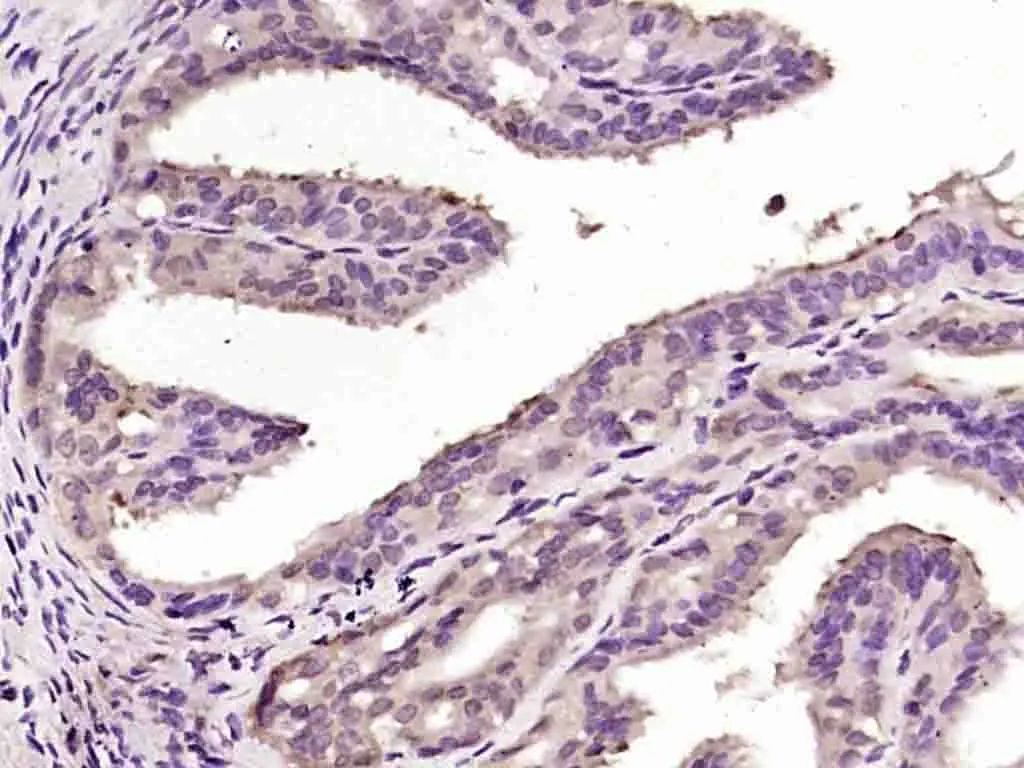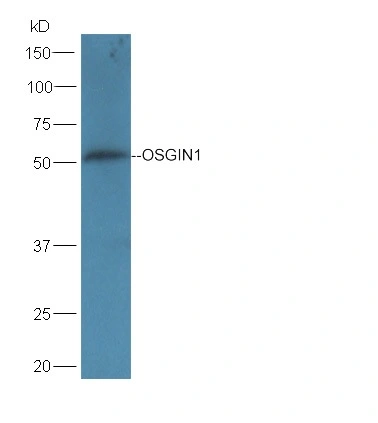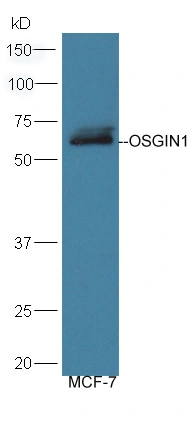
IHC-P analysis of rat fallopian tube tissue using GTX03681 OSGIN1 antibody. Dilution : 1:200 Antigen retrieval : Heat mediated sodium citrate buffer (pH6.0)
OSGIN1 antibody
GTX03681
ApplicationsWestern Blot, ImmunoHistoChemistry, ImmunoHistoChemistry Paraffin
Product group Antibodies
ReactivityHuman, Mouse, Rat
TargetOSGIN1
Overview
- SupplierGeneTex
- Product NameOSGIN1 antibody
- Delivery Days Customer9
- Application Supplier NoteWB: 1:500-1:2000. IHC-P: 1:100-1:500. *Optimal dilutions/concentrations should be determined by the researcher.Not tested in other applications.
- ApplicationsWestern Blot, ImmunoHistoChemistry, ImmunoHistoChemistry Paraffin
- CertificationResearch Use Only
- ClonalityPolyclonal
- Concentration1 mg/ml
- ConjugateUnconjugated
- Gene ID29948
- Target nameOSGIN1
- Target descriptionoxidative stress induced growth inhibitor 1
- Target synonymsBDGI; BMSC-derived growth inhibitor; bone marrow stromal cell-derived growth inhibitor; OKL38; ovary, kidney and liver protein 38; oxidative stress-induced growth inhibitor 1; pregnancy-induced growth inhibitor OKL38
- HostRabbit
- IsotypeIgG
- Protein IDQ9UJX0
- Protein NameOxidative stress-induced growth inhibitor 1
- Scientific DescriptionThis gene encodes an oxidative stress response protein that regulates cell death. Expression of the gene is regulated by p53 and is induced by DNA damage. The protein regulates apoptosis by inducing cytochrome c release from mitochondria. It also appears to be a key regulator of both inflammatory and anti-inflammatory molecules. The loss of this protein correlates with uncontrolled cell growth and tumor formation. Naturally occurring read-through transcription exists between this gene and the neighboring upstream malonyl-CoA decarboxylase (MLYCD) gene, but the read-through transcripts are unlikely to produce a protein product. [provided by RefSeq, Aug 2011]
- ReactivityHuman, Mouse, Rat
- Storage Instruction-20°C or -80°C,2°C to 8°C
- UNSPSC12352203


